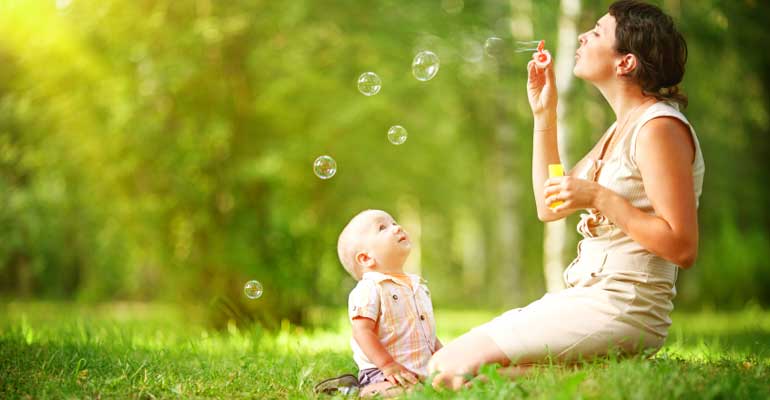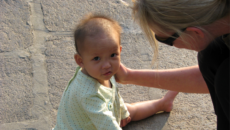A baby depends on her parents for all of her needs. When she cries, her parents feed her, change her diapers, and comfort her. She, in turn, learns that she can trust them to provide for her, and begins the attachment cycle, building upon bonds that started in the womb. Regardless of your child’s age at adoption, you need to embrace a parenting style that promotes attachment and fosters lifelong bonds. You do this by becoming your child’s primary provider, especially during the transition period and through each developmental stage.
The Cycle of Attachment
Lifelong bonds are formed through the cycle of attachment. As a child becomes aware of her physical and emotional needs, she may become anxious about who will take care of her, causing stress hormones in the body to surge. When a caregiver consistently meets those needs, the child learns to trust that caregiver to do so in the future. The repetition of this cycle forms the foundation for healthy relationships in the child’s life.
Children who lived in an orphanage, or moved from one foster home to the next, may have difficulty completing this cycle. A child may experience anxiety when his needs are met by different people, or when a busy caregiver does not immediately gratify his needs. Even if there is one primary caregiver, that person is not available full-time as a parent would be.
Abuse and neglect also can interrupt the attachment cycle. Prenatal exposure to drugs and alcohol can prevent the development of physiological systems and make children hypersensitive and difficult to console. Children who were neglected or abused may find gratification in rocking, head banging, or abuse, which interfere with attachment.
Parenting to Promote Attachment
How do you practice attachment parenting? First, you need to meet your child’s physical and emotional needs as much as possible, which, admittedly, may be harder with children who had to assume the parent role in a previous household. Food should be associated with comfort, so you should not stop bottle-feeding or encourage independent feeding. You can hold your child in your lap or sing soothing songs during mealtime.
Restrict visitors after bringing your child home, and limit her physical contact with others, to discourage indiscriminate friendliness. Visitors should be encouraged to help around the house, leaving the hugs, kisses, and child care to you. Delay visits to stimulating places, even shopping malls, until your child settles in.
Interactive games, such as blowing bubbles, reading, and peek-a-boo, promote reciprocity and thus attachment. Snuggle with your child as much as possible. Point out to a child how he resembles you (if not physically, then in personality). You could make T-shirts with a picture for each family member.
For young children, stimulating the senses is helpful. Giving a child a photo album of her new home and family encourages her to lay claim to new relationships. If possible, keep the clothes she came with—their smell may comfort her.
Sleeping problems call for extra flexibility. When children are tired, they may be less trusting, and sleep routines in their new homes may be different from what they’re used to. Comfort her as she falls asleep rather than letting her cry it out. Sleeping with an article of clothing you have worn may comfort her. Let her sleep with you, or at least in your room. A newly-placed child cannot be “spoiled.”
Remember that the process takes time. It’s normal for a child to grieve for the loss of a previous home. You can promote attachment by letting him grieve, as well as by caring for his physical needs. And as your child’s dependence grows, so will your own attachment to him. Both are necessary for you to grow into a healthy family.



